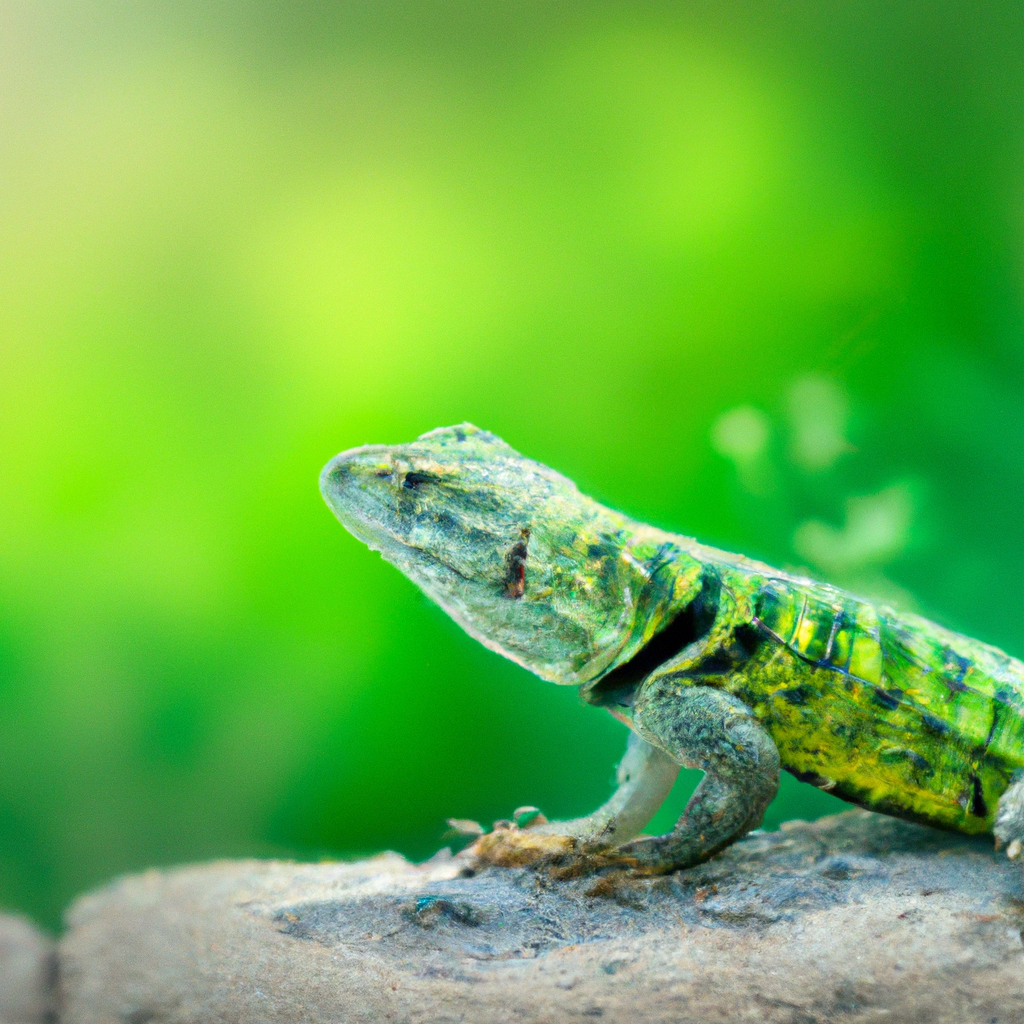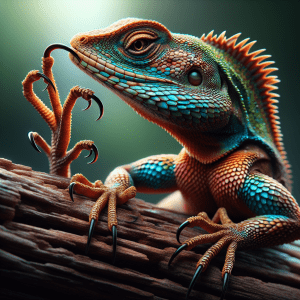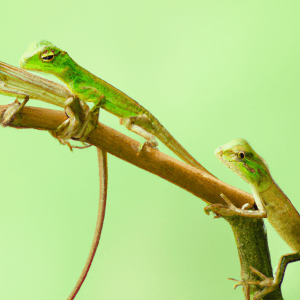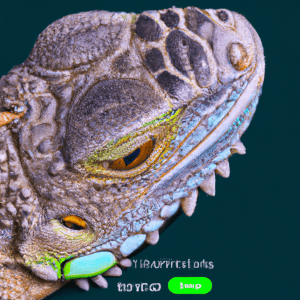Understanding the Importance of Hiding Spots for Pet Lizards
Imagine you’re a pet lizard exploring a new enclosure – what’s the first thing you look for? A cozy hiding spot, right? It’s like having your own secret hideout where you can chill out and feel safe. But have you ever wondered why these scaly creatures are so obsessed with finding the perfect hiding spot? Well, let me tell you a little secret – it’s all about survival instincts!
Just like us humans, pet lizards need their personal space too. They seek hiding spots not just to escape predators but also to regulate their body temperature and reduce stress. It’s like having a little sanctuary within their habitat where they can unwind and recharge their batteries. I remember when I first got my pet lizard, I was amazed at how quickly it found its favorite hiding spot behind a rock in its terrarium. It was like watching a little explorer discovering a hidden treasure!
Creating the ideal hiding spots for your pet lizard is essential for their well-being. Imagine being stuck in a brightly lit room with no curtains – it would be pretty uncomfortable, right? Similarly, pet lizards need a place to retreat to when they feel overwhelmed or exposed. By providing them with a variety of hiding spots, you’re not just catering to their natural instincts but also ensuring they feel secure and content in their environment.
So, the next time you’re setting up your pet lizard’s habitat, think about their hiding spots as their personal safe havens. Whether it’s a cozy cave made of rocks or a leafy hideout in a plant, make sure to create a diverse range of hiding spots to keep your scaly friend happy and healthy. After all, a happy lizard is a healthy lizard!
Behavior of Pet Lizards: Why Do They Seek Hiding Spots?
Have you ever noticed how your pet lizard always seems to find the perfect hiding spot? It’s like they have a secret hideout in every corner of their enclosure! Well, that’s because hiding is a natural behavior for lizards. They seek out these spots not only for protection but also for comfort and security.
Lizards have a fascinating way of communicating through their hiding behaviors. When they retreat to a hiding spot, it could indicate that they are feeling stressed, scared, or simply seeking some alone time. Understanding why your pet lizard seeks these hiding spots can help you better cater to their needs and ensure they feel safe and secure in their environment.
Did you know that the instinct to hide is deeply ingrained in a lizard’s DNA? In the wild, hiding spots provide lizards with protection from predators and harsh environmental conditions. Even as pets, lizards retain this instinct, so it’s essential to provide them with suitable hiding spots in their habitat.
By observing your pet lizard’s behavior, you can gain insights into their preferences when it comes to hiding spots. Some lizards may prefer dark, enclosed spaces, while others might favor elevated hiding spots where they can survey their surroundings. Understanding your lizard’s hiding behavior can help you customize their enclosure to meet their specific needs.
Creating a variety of hiding spots in your lizard’s habitat not only enhances their well-being but also enriches their environment. From cozy caves to leafy hideaways, there are countless ways to cater to your pet lizard’s hiding instincts. So, the next time you catch your lizard disappearing into a hiding spot, remember that it’s all part of their natural behavior – and providing them with the right hiding spots is key to keeping them happy and healthy.
Choosing the Right Hiding Spots for Different Types of Pet Lizards
Have you ever noticed how your pet lizard always seems to disappear into its hiding spot just when you want to check up on it? It’s like they have their own little secret world in there! And that’s exactly why choosing the right hiding spots for different types of pet lizards is so crucial.
Each type of pet lizard has its own unique behaviors and preferences when it comes to hiding spots. For example, arboreal lizards, like chameleons, prefer elevated hiding spots where they can climb and feel secure. On the other hand, ground-dwelling lizards, such as bearded dragons, prefer burrows or caves where they can retreat and relax.
When setting up hiding spots for your pet lizard, it’s essential to consider their natural habitat and instincts. By replicating their natural environment, you can help them feel safe and reduce stress levels. Plus, providing a variety of hiding spots allows your pet lizard to exhibit natural behaviors, such as thermoregulation and exploration.
One practical tip is to create hiding spots that vary in size and shape to accommodate different activities and moods of your pet lizard. Some lizards may prefer cozy, enclosed spaces, while others may enjoy open, airy spots to bask in the light. By offering a range of options, you can cater to your pet lizard’s changing needs and preferences.
Choosing the right hiding spots for your pet lizard is not just about creating a cozy retreat; it’s also about promoting their overall well-being and health. Lizards are sensitive creatures that rely on hiding spots to regulate their body temperature, reduce stress, and feel secure in their environment. So next time you catch your pet lizard darting into its hiding spot, remember that it’s not just a hiding spot—it’s their sanctuary.
DIY Hiding Spot Ideas for Your Pet Lizard’s Habitat
Imagine you’re exploring DIY hiding spot ideas for your pet lizard’s habitat. Picture this: you’re all set to revamp your scaly friend’s enclosure, adding some creative and cozy hiding spots to make them feel right at home. From quirky caves to leafy hideaways, the possibilities are endless when it comes to creating a lizard paradise.
You start by gathering materials for your DIY project, channeling your inner reptilian architect. With some basic supplies like driftwood, rocks, and non-toxic plants, you’re ready to unleash your creativity and build a hiding spot that your pet lizard will love.
As you begin crafting the perfect hiding spot, you recall a funny incident when your lizard first discovered a makeshift hideout you had set up. It was like a game of hide-and-seek, with your curious lizard peeking out from their new shelter, eyes gleaming with excitement. It was a heartwarming moment that showcased the importance of providing engaging and safe hiding spots for your pet.
Incorporating an interesting fact about DIY hiding spots for pet lizards, did you know that some lizards prefer elevated hideaways while others prefer ground-level shelters? Understanding your pet lizard’s species-specific preferences can help you tailor the hiding spots to suit their unique needs and behaviors.
As you put the finishing touches on your DIY creation, you can’t help but marvel at the transformation taking place in your pet lizard’s habitat. The addition of these personalized hiding spots not only enhances the aesthetic appeal but also provides a sense of security and enrichment for your scaly companion.
With a newfound appreciation for the importance of hiding spots in your pet lizard’s environment, you feel a sense of satisfaction knowing that you’ve created a sanctuary where your lizard can thrive and feel at ease. So, grab your tools and get ready to embark on a DIY adventure that will bring joy and comfort to your beloved pet lizard.
Utilizing Natural Elements for Hiding Spots in Your Lizard’s Enclosure
Imagine you have a group of curious little explorers in your pet lizard’s habitat – that’s essentially what creating hiding spots for your scaly friend feels like! We all know lizards have a natural instinct to seek shelter and privacy, so providing them with suitable hiding spots is crucial for their well-being.
Now, when it comes to utilizing natural elements for hiding spots in your lizard’s enclosure, think about how you can mimic their natural habitat. Picture your lizard basking under a warm rock or cozying up in a leafy hideout – these are the scenarios we want to recreate in their tank.
One interesting fact to consider is that different species of lizards have specific preferences when it comes to hiding spots. For example, arboreal lizards like to climb and may enjoy elevated hiding spots, while ground-dwelling lizards may prefer burrows or caves. Understanding your pet lizard’s species and behaviors can help you tailor their hiding spots to suit their needs perfectly.
When setting up natural hiding spots, you can get creative with materials like driftwood, rocks, plants, and even hollow logs. These elements not only provide hiding spaces but also add a touch of realism to your lizard’s environment. Imagine transforming their tank into a mini jungle or desert oasis – the possibilities are endless!
As you design these natural hiding spots, remember to prioritize safety and cleanliness. Ensure that all materials are non-toxic and won’t harm your lizard if ingested. Regularly inspect and clean the hiding spots to prevent the buildup of bacteria or mold, which could pose health risks to your scaly companion.
By incorporating natural elements into your lizard’s habitat, you’re not just creating hiding spots – you’re crafting a miniature world where your pet can feel secure and at home. So, get creative, observe your lizard’s behavior, and watch as they explore and enjoy their new hiding spots in their personalized sanctuary.
Common Mistakes to Avoid When Creating Hiding Spots for Pet Lizards
Have you ever created a hiding spot for your pet lizard only to find them avoiding it altogether? It can be frustrating when your efforts go unnoticed by your scaly friend. Let me share a tip that could help you avoid this common mistake.
When setting up hiding spots for pet lizards, it’s essential to consider their natural instincts and behaviors. One common mistake many lizard owners make is placing hiding spots in areas with high traffic or visibility. Imagine if you were trying to relax in a cozy nook, but it was right in the middle of a busy street – not very relaxing, right?
Pet lizards, like most reptiles, prefer privacy and seclusion when they seek shelter. Placing hiding spots in quieter, more secluded areas of their habitat mimics their natural environment and helps them feel secure. Additionally, consider the size of the hiding spot – it should be just big enough for your lizard to comfortably retreat into without feeling cramped.
By understanding your pet lizard’s needs and preferences, you can create hiding spots that truly cater to their instincts. Providing them with suitable hiding spots not only enhances their well-being but also allows them to exhibit their natural behaviors in captivity.
So, take a step back and observe your pet lizard’s behavior. Are they avoiding certain hiding spots? If so, try relocating them to quieter areas of their habitat. Your lizard will thank you for creating a safe and cozy sanctuary where they can retreat and recharge whenever they need to.
Maintenance and Cleaning Tips for Pet Lizard Hiding Spots
Have you ever found yourself puzzled over how to keep your pet lizard’s hiding spots clean and well-maintained? It’s a common challenge many lizard owners face, but fear not – I’ve got some practical tips to share with you.
Keeping your pet lizard’s hiding spots clean is essential for their health and well-being. Imagine if you were cooped up in a stuffy, dirty room all day – not a pleasant thought, right? Well, the same goes for your scaly friend. Regular cleaning and maintenance of their hiding spots ensure a hygienic and comfortable environment for them to retreat to.
One handy tip is to use natural cleaning solutions when tidying up your lizard’s hiding spots. Harsh chemicals can be harmful to your pet, so opt for gentle alternatives like a mixture of vinegar and water or a mild soap solution. Be sure to thoroughly rinse and dry the hiding spots before placing them back in your lizard’s habitat.
Another essential aspect of maintaining hiding spots is to check for any signs of mold, mildew, or pest infestations. These can pose serious health risks to your pet lizard. Regularly inspect the hiding spots for any unwanted guests or growths, and take prompt action to address the issue.
Don’t forget to rotate and rearrange the hiding spots occasionally to prevent bacteria buildup and allow for proper ventilation. This will also keep your pet lizard’s habitat stimulating and engaging, preventing boredom and promoting their overall well-being.
By incorporating these simple yet effective cleaning and maintenance practices into your pet lizard care routine, you’ll ensure that their hiding spots remain safe, clean, and inviting. Your scaly companion will thank you for it with their contented and healthy demeanor.
Enhancing Your Pet Lizard’s Well-being with Proper Hiding Spots
Have you ever wondered about the significance of providing proper hiding spots for your pet lizard? Let me tell you, it’s not just about creating cozy nooks for them to disappear into – it’s crucial for their well-being!
Imagine this – you come home after a long day, seeking the comfort of your cozy bed or favorite spot on the couch. Similarly, pet lizards need their hiding spots to feel safe, secure, and stress-free in their environment. It’s like having a personal sanctuary amidst the hustle and bustle of their enclosure.
But here’s the thing – maintaining these hiding spots is not just a one-time deal. Just like we tidy up our living spaces regularly, it’s essential to keep your pet lizard’s hiding spots clean and clutter-free. A dirty or neglected hiding spot can harbor bacteria or parasites, posing a risk to your reptilian friend’s health.
Now, let’s talk about a practical tip – when cleaning your pet lizard’s hiding spots, opt for natural cleaning solutions like a vinegar-water mix. This not only helps in disinfecting the area but also ensures that no harmful chemicals come in contact with your pet lizard.
Remember, each pet lizard is unique, and their hiding spot preferences may vary. Some may prefer cozy, enclosed spaces, while others might enjoy basking in the open. Observing your pet lizard’s behavior can give you valuable insights into their hiding spot preferences, allowing you to cater to their specific needs effectively.
So, the next time you’re setting up or cleaning your pet lizard’s hiding spots, think of it as creating a personalized retreat for your scaly companion. By providing a safe and comfortable hiding spot, you’re not just enhancing their physical environment but also contributing to their overall well-being and happiness.




